■ Previous GM Sound Source Series
GM Sound Source 01: Ancient GM Sound Sources
GM Sound Source 02: Piano Category
GM Sound Source 03: Chromatic Percussion Category
GM Sound Source 04: Organ Category
Guitars are an essential part of popular music, yet they are not particularly well-suited for MIDI sequencing. This is because without considering the way a guitar is played and its structural characteristics, the sound can quickly become unnatural. Even for those who can play the guitar, programming realistic guitar parts is not necessarily easy—it often takes a lot of effort, and in many cases, playing the real instrument is simply more efficient. With the latest guitar virtual instruments, the software helps compensate for these difficulties, making the sound more convincing. However, classic GM guitar sounds are merely sample collections, so careful handling is required to make them sound natural.
There are also many challenges regarding sound quality. Back in the 1990s, when GM sound sources were widely used, distorted guitar tones were particularly difficult to manage. Today, with the advancement of amp simulators, it has become possible to achieve more usable sounds. In the video above, the sound has been processed through TH3, an amp simulator plugin included with Cakewalk, to create a more realistic tone.
Acoustic Guitar (Nylon Strings)
This category includes acoustic guitars with nylon strings.
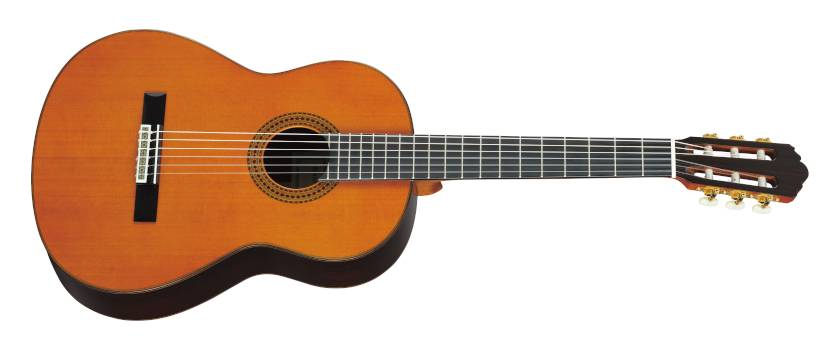
025 000 Nylon Gt. - Range: E2-C6
This is a classical guitar. It features the sound of a nylon-string acoustic guitar played with fingers. You can even hear the subtle sound of fingernails catching on the strings. As long as you pay attention to dynamics and voicing, it can sound quite natural, making it one of the easiest guitar sounds to work with in the GM category.
025 001 Ukulele
The ukulele is a four-string instrument originating from Hawaii. The standard tuning for a soprano ukulele is as follows, from the first string:
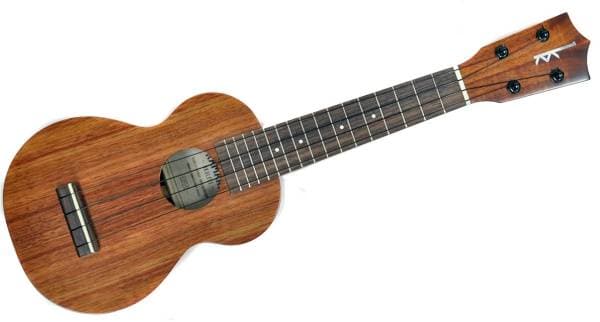
1st string: A4
2nd string: E4
3rd string: C4
4th string: G4
Unlike a typical stringed instrument, the lowest pitch is not on the fourth string but on the third string. When played with open strings, it forms a C6 chord. When strumming a ukulele, the strings naturally sound in succession rather than simultaneously, so adjusting the timing of each note can make the performance sound more realistic. In the video, I attempted to create a simple, natural sound, but it ended up feeling overly artificial, which was a bit of a failure.
025 002 Nylon O (key off) - Range: E2-C6
This sound includes noise that occurs when the string is released from the fret. The prominence of the noise varies depending on the pitch. The sample sound is from E5, where the noise is noticeable, but in lower registers, it is less prominent.
025 003 Nylon Gt. 2 - Range: E2-C6
A classical guitar sound with a brighter tone compared to 025 000.
Acoustic Guitars (Steel Strings)
This category includes acoustic guitars strung with steel strings.
026 000 Steel-Str. Gt. - Range: E2-C6
A steel-string acoustic guitar. While arpeggios can be effectively programmed, strummed chords require careful timing adjustments for each string’s attack to achieve a realistic feel, making them more labor-intensive to sequence.
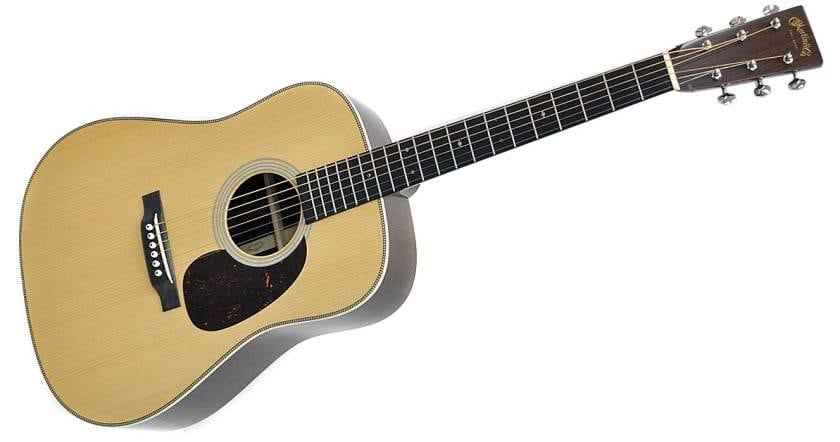
026 001 12-Str. Gt. - Range: E2-C6
A 12-string acoustic guitar with six courses of paired steel strings. It is played like a standard 6-string guitar, but each note consists of two simultaneous strings, creating a rich, full sound.
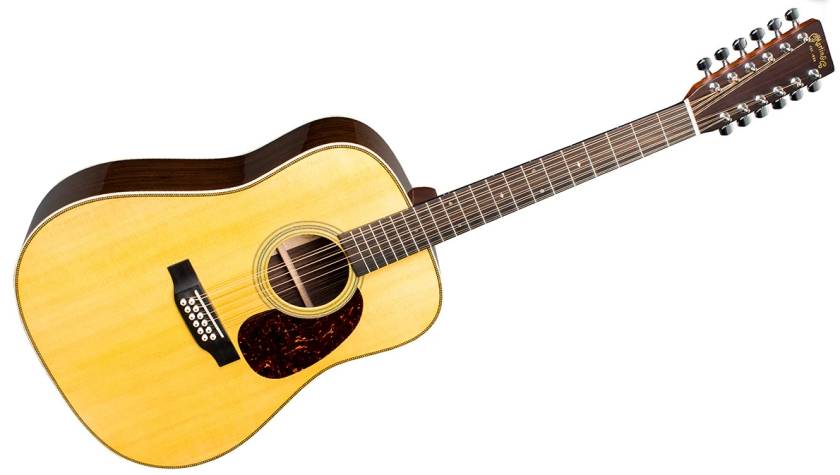
026 002 Mandolin - Range: G3-G7
A traditional instrument with four courses of paired strings (eight strings total). It is well-suited for tremolo playing.
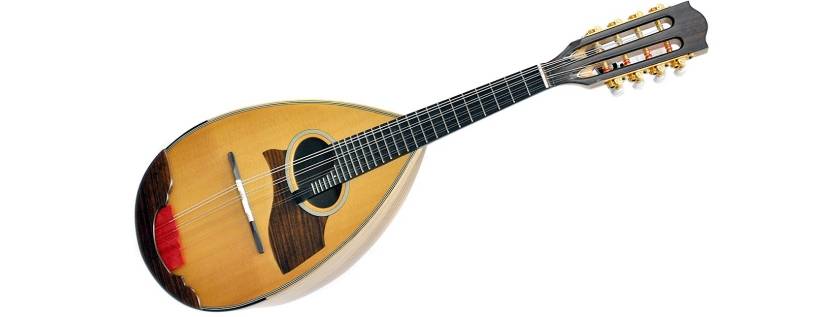
026 003 Steel+Body - Range: E2-C6
A steel-string acoustic guitar sound with additional body resonance, resulting in a fuller, deeper tone.
Electric Guitars
From this point on, the focus is on electric guitars.
027 000 Jazz Gt. - Range: E2-C6
An electric guitar with a warm, rounded clean tone, processed through an amplifier.
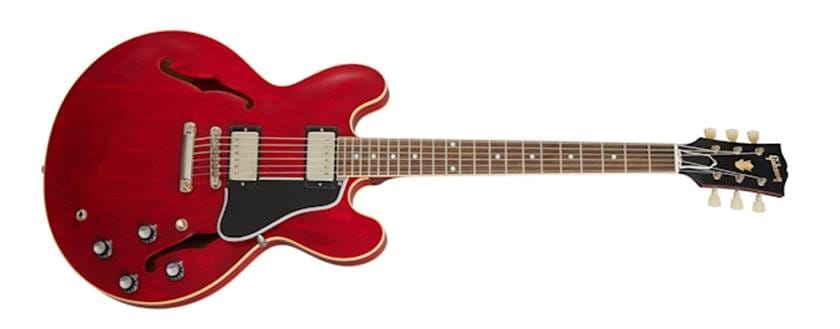
027 001 Pedal Steel
The pedal steel guitar is a unique instrument played similarly to a keyboard, as shown in the picture below. Unlike traditional guitars, where strings are pressed against frets, this instrument uses a slide bar to alter pitch by gliding over the strings. The tuning and number of strings vary depending on the model. The pedals allow for individual pitch adjustments on each string, enabling the execution of various chords. This instrument is predominantly used in Hawaiian and country music. Pedal steel guitars are among the most challenging instruments to program. In the video, creating a realistic sound was particularly difficult. Since the instrument relies heavily on slide techniques, extensive use of pitch bend and portamento was necessary.
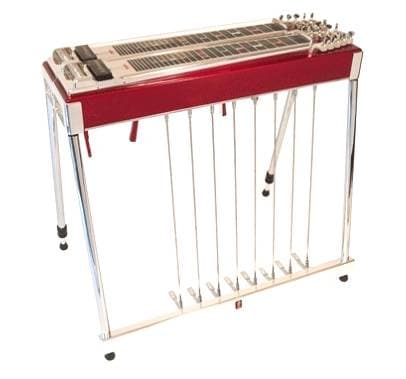
Pedals steel guitar moderne - Own work CC BY-SA 3.0 (Sourced from Wikipedia)
Electric Guitars
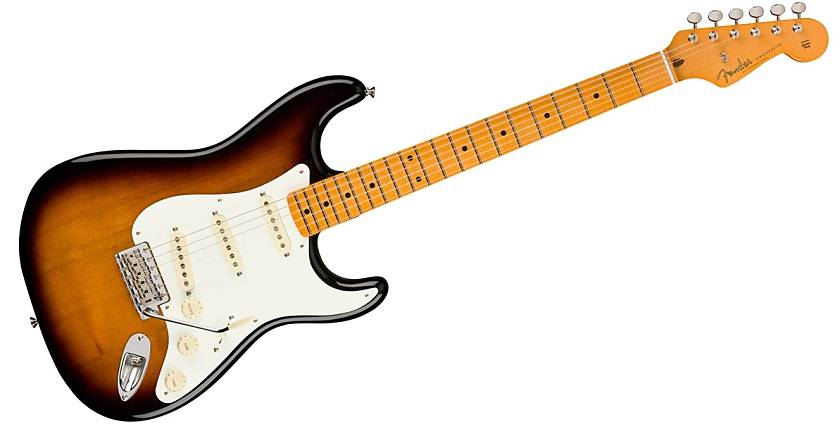
028 000 Clean Gt. - Range: E2-C6
An electric guitar sound with a sharp attack processed through an amplifier. It is likely a Strat-type guitar played with the rear pickup.
028 001 Clean Half - Range: E2-C6
The difference from 000 is that the pickup is set to a half-tone position, resulting in a milder sound.
028 002 Mid Tone Gt. - Range: E2-C6
A mid-tone guitar sound. It seems more suitable for lead playing rather than rhythm cutting.
Electric Guitars with Short Sustain Techniques
029 000 Muted Gt. - Range: E2-C6
A playing technique where the picking hand rests slightly on the bridge to mute the strings.
029 001 Funk Gt. - Range: E2-C6
A clean-tone guitar sound suitable for cutting.
029 002 Funk Gt. 2 - Range: E2-C6
A slightly more muffled tone compared to 001.
029 003 Jazz Man - Range: E2-C6
Despite the ‘jazz’ name, this is a clean guitar tone with a strong attack.
Overdrive Guitars
Electric guitars shape their final sound using amplifiers, but they can also actively create tones. From this point on, the guitar sounds are intentionally distorted through an amplifier.
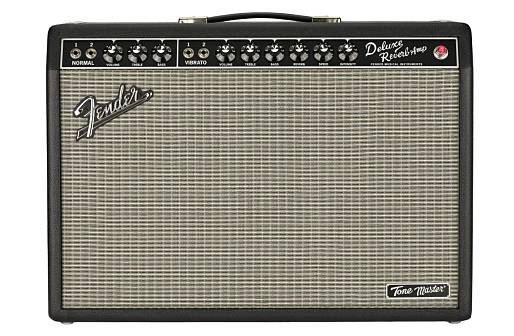
030 000 Overdrive Gt. - Range: E2-D6
Overdrive is a type of distortion where the natural tone of the guitar remains somewhat present. Unlike heavy distortion, overdrive provides a more organic, warm saturation. The sample uses not only TTS but also the TH3 amp simulator included in Cakewalk to achieve a more realistic sound. The picking harmonics section is created by simply raising the pitch. Picking harmonics is a technique where the player lightly touches the string immediately after picking to produce harmonic overtones.
030 001 Gt. Pinch - Range: E2-D6
This is the same sound as 000, but when played at a certain velocity threshold, it automatically produces pinch harmonics regardless of pitch. In GM Level 1, harmonics were a separate patch, but GM2 introduced this sound to make it easier to use. The picking harmonics in the 000 sample are achieved through velocity control in this version.
Distortion Guitars

031 000 Distortion Gt. - Range: E2-D6
Distortion is a heavily processed guitar tone created using effects like distortion pedals or amp settings. Compared to overdrive, it has a more aggressive and artificial sound, making it well-suited for mechanical or high-intensity phrases. This tone is also finalized using the TH3 amp simulator.
031 001 Feedback Gt. - Range: E2-D6
At first, this sounds like the 031 000 Distortion Gt., but when the note is sustained, natural feedback starts automatically. Feedback occurs when the sound from an amplifier (speaker) loops back into the guitar’s pickups, creating sustained resonance. Although originally considered unwanted noise, rock musicians often use it deliberately for effect. In GM Level 1, feedback was treated as a separate patch.
031 002 Dist. Rythm Gt. - Range: E2-D6
A distorted rhythm guitar tone. It has a palm-muted character, commonly used in rock and metal genres.
Special Electric Guitar Techniques
032 000 Gt. Harmonics - Range: C2-C7
A collection of artificial harmonics produced on a distorted guitar. As a specialized playing technique, this patch is generally used in combination with other guitar tones.
032 001 Gt. Feedback - Range: E2-D6
A distorted guitar feedback sound. Like harmonics, this is a specialized tone typically used alongside other guitar patches.
The “sound & person” column is made up of contributions from you.
For details about contributing, click here.












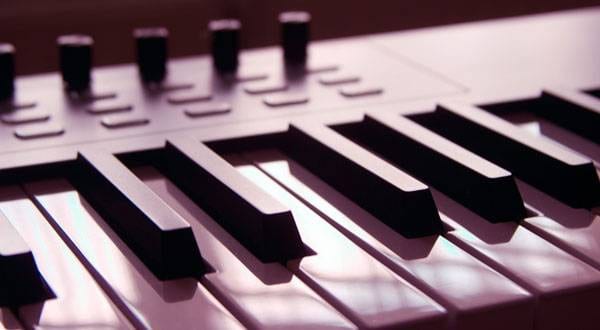
![[Building Your Equipment] Assembling DTM Gear For Under A 100,000 Yen Budget!!](/contents/uploads/thumbs/5/2021/11/20211116_5_15163_1.jpg)

![[2023] Recommended Items for Music Programming - DAW/Software Instruments/Plug-ins](/contents/uploads/thumbs/2/2020/11/20201102_2_11495_1.jpg)
 定番DAWソフトウェア CUBASE
定番DAWソフトウェア CUBASE
 DTMセール情報まとめ
DTMセール情報まとめ
 ドラム音源に最適なMIDIパッド・コントローラー
ドラム音源に最適なMIDIパッド・コントローラー
 DTMに必要な機材
DTMに必要な機材
 UR-RT4 ソフト音源やループ素材をリアンプ
UR-RT4 ソフト音源やループ素材をリアンプ
 DTM・DAW購入ガイド
DTM・DAW購入ガイド















